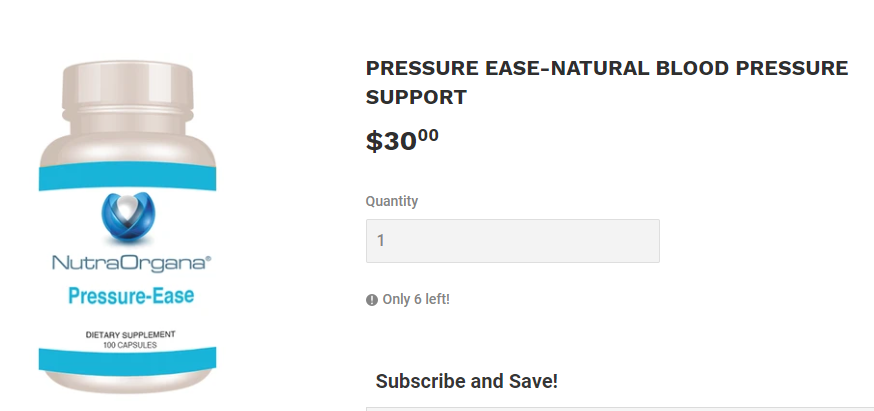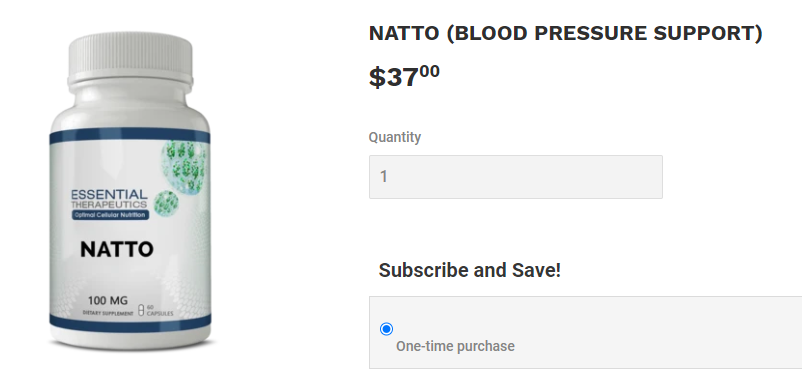Is Broccoli A Super Health Food?
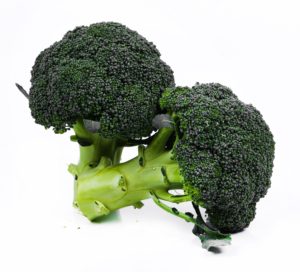 Scientists at the Harvard School of Public Health in Boston published an article showing that broccoli, along with spinach, helped to minimize risk for cataracts.
Scientists at the Harvard School of Public Health in Boston published an article showing that broccoli, along with spinach, helped to minimize risk for cataracts.
When another team of Harvard scientists looked at how diet might protect against stroke, broccoli’s benefits again came to the fore, in research published in the October 6, 1999 issue of the Journal of the American Medical Association.
Ounce for ounce, boiled broccoli has more vitamin C than an orange and as much calcium as a glass of milk, according to the USDA’s nutrient database. One medium spear has three times more fiber than a slice of wheat bran bread. Broccoli is also one of the richest sources of vitamin A in the produce section.
Cataract Prevention
Broccoli and other leafy green vegetables contain powerful phytonutrient antioxidants in the carotenoid family called lutein and zeaxanthin, both of which are concentrated in large quantities in the lens of the eye. When 36,000 men in the Health Professionals Follow-Up Study were monitored, those who ate broccoli more than twice a week had a 23% lower risk of cataracts compared to men who consumed this antioxidant-rich vegetable less than once a month.
Broccoli Fights Cancer
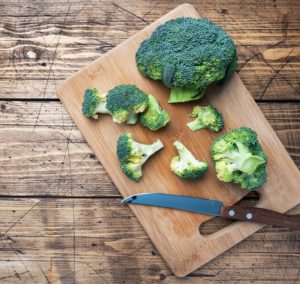 Like other cruciferous vegetables, broccoli contains the phytonutrients sulforaphane and the indoles, which have significant anti-cancer effects. Research on indole-3-carbinol shows this compound helps deactivate a potent estrogen metabolite (4-hydroxyestrone) that promotes tumor growth, especially in estrogen-sensitive breast cells, while at the same time increasing the level of 2-hydroxyestrone, a form of estrogen that can be cancer-protective. Indole-3-carbinol has been shown to suppress not only breast tumor cell growth, but also cancer cell metastasis (the movement of cancerous cells to other parts of the body).
Like other cruciferous vegetables, broccoli contains the phytonutrients sulforaphane and the indoles, which have significant anti-cancer effects. Research on indole-3-carbinol shows this compound helps deactivate a potent estrogen metabolite (4-hydroxyestrone) that promotes tumor growth, especially in estrogen-sensitive breast cells, while at the same time increasing the level of 2-hydroxyestrone, a form of estrogen that can be cancer-protective. Indole-3-carbinol has been shown to suppress not only breast tumor cell growth, but also cancer cell metastasis (the movement of cancerous cells to other parts of the body).
Dr. Paul Talalay, a food chemist at the Johns Hopkins University School of Medicine in Baltimore, Maryland, has gone so far as to name his lab after “Brassica,” the genus that includes broccoli and cauliflower. Talalay and his team at the Brassica Chemoprotection Laboratory have discovered that broccoli is rich in substances called isothiocyanates — chemicals shown to stimulate the body’s production of its own cancer-fighting substances, called “phase two enzymes.” According to Talalay, these enzymes, in turn, neutralize potential cancer-causing substances before they have a chance to damage the DNA of healthy cells.
To test broccoli’s cancer-fighting power, Talalay fed rats hearty servings of the vegetable for a few days and then exposed them to a potent carcinogen known to trigger a form of breast cancer in the animals. Broccoli-munching rats were half as likely to develop tumors as animals on standard chow. Scientists at Tokyo’s Graduate School of Agriculture have shown that isothiocyanates can block the growth of melanoma skin cancer cells, according to findings published in 1999 in the journal “Nutrition and Cancer.”
I3C was shown to suppress the growth of prostate cancer cells in a dose-dependent manner by blocking several important steps in cell cycling and also to inhibit the production of prostate specific antigen (PSA), a protein produced by the prostate whose rising levels may indicate prostate cancer. Researchers noted that the results of this study demonstrate that “I3C has a potent antiproliferative effect” in human prostate cancer cells, which qualifies it as “a potential chemotherapeutic agent” against human prostate cancer.
 Those eating the most cruciferous vegetables were found to have a 29% lower risk of bladder cancer compared to participants eating the least of this family of vegetables.
Those eating the most cruciferous vegetables were found to have a 29% lower risk of bladder cancer compared to participants eating the least of this family of vegetables.
A study of Chinese women in Singapore, a city in which air pollution levels are often high putting stress on the detoxification capacity of residents’ lungs, found that in non-smokers, eating cruciferous vegetables lowered risk of lung cancer by 30%. In smokers, regular cruciferous vegetable consumption reduced lung cancer risk an amazing 69%!
Researchers from the University of Hawaii have shown that, at the tiny concentration of just 100 micromoles indole-3-carbinol, lowers liver cells’ secretion of the cholesterol transporter, apolipoproteinB-100 by 56%! Apolipoprotein B-100 (apoB) is the main carrier of LDL cholesterol to tissues, and high levels have been linked to plaque formation in the blood vessels.
Not only was apoB-100 secretion cut by more than half, but significant decreases also occurred in the synthesis of lipids (fats), including triglycerides and cholesterol esters. (Maiyoh GK, Huh JE, et al., J Nutr.)
Lower Your Blood Pressure With Proper Diet
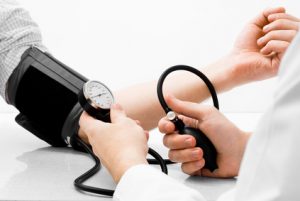
High blood pressure, which is blood pressure higher than 140/90 mmHg, affects more than 65 million— or one out of every three — American adults. Another 59 million Americans have prehypertension, which is blood pressure between 120/80 and 140/89 mmHg. This increases their chances of developing high blood pressure and its complications.
High blood pressure is dangerous because it makes your heart work too hard, hardens the walls of your arteries, and can cause the brain to hemorrhage or the kidneys to function poorly or not at all. If not controlled, high blood pressure can lead to heart and kidney disease, stroke, and blindness.
But high blood pressure can be prevented — and lowered — if you take these easy steps.
Follow a healthy eating plan, such as DASH, that includes foods lower in salt and sodium.
Lower Your Blood Pressure With The DASH Diet
What you eat affects your chances of developing high blood pressure (hypertension). Research shows that high blood pressure can be prevented — and lowered — by following the Dietary Approaches to Stop Hypertension (DASH) eating plan, which includes eating less salt and sodium.
The DASH Eating Plan
The DASH eating plan is rich in fruits, vegetables, fat-free or low-fat milk and milk products, whole grains, fish, poultry, beans, seeds, and nuts. It also contains less salt and sodium; sweets, added sugars, and sugar-containing beverages; fats; and red meats than the typical American diet. This heart-healthy way of eating is also lower in saturated fat, trans-fat, and cholesterol and rich in nutrients that are associated with lowering blood pressure — mainly potassium, magnesium, calcium, protein, and fiber. Find out more about the DASH diet at the link below: www.nhlbi.nih.gov/health/public/heart/hbp/dash/dash_inbrief.htm
For every minute you are angry you lose sixty seconds of happiness.
— RALPH WALDO EMERSON
“Twenty years from now you will be more disappointed by the things you didn’t do than by the ones you did do. So throw off the bowlines. Sail away from the safe harbour. Catch the trade winds in your sails. Explore. Dream. Discover.”
— MARK TWAIN
Along with reducing salt, losing any extra pounds can help reduce high blood pressure.
My patients who need to lose weight, do so on the 2Transform metabolic anti-inflammatory diet. They normally lose half a pound a day, dramatically reduce or eliminate high blood pressure, type 2 diabetes, high cholesterol and the drugs used to treat these conditions.
Learn more about the diet my patients use to lose 20, 40, some over 100 lbs using an easy to follow diet and all natural fat burning supplements by visiting www.metabolicprogram.com, or CLICKING HERE
Natural Blood Pressure Supplement Pressure Ease Helps Reduce High Blood Pressure
Many of my patients can lower their blood pressure and stop or drastically reduce their prescription blood pressure drugs by exercising, losing weight, reducing salt intake, and following the DASH diet. Nutritional supplements may also be helpful in reducing elevated blood pressure.
Here is the all natural blood pressure supplement I recommend
This all natural supplement helps reduce high blood pressure:
Vitamin D Is One of The Most Important Vitamins For Prevention Of Disease
Studies on vitamin D continue to show a direct association with chronic pain, poor immune function, anxiety, depression, and fatigue.
 According to the Mayo Clinic Proceedings (Dec. 2003), vitamin D deficiency is one possible cause of persistent and vague musculoskeletal pain. A University of Minnesota study of 150 children and adults suffering with vague musculoskeletal pain found that 93 percent were deficient in vitamin D. The worst vitamin D deficiencies were found in women of childbearing age. Quite surprisingly, I’m finding that many of my fibromyalgia patients are low in vitamin D, even in the sunny southeastern United States. Anyone with fibromyalgia should be tested for vitamin D deficiency. The test is inexpensive and vitamin D supplementation costs pennies.
According to the Mayo Clinic Proceedings (Dec. 2003), vitamin D deficiency is one possible cause of persistent and vague musculoskeletal pain. A University of Minnesota study of 150 children and adults suffering with vague musculoskeletal pain found that 93 percent were deficient in vitamin D. The worst vitamin D deficiencies were found in women of childbearing age. Quite surprisingly, I’m finding that many of my fibromyalgia patients are low in vitamin D, even in the sunny southeastern United States. Anyone with fibromyalgia should be tested for vitamin D deficiency. The test is inexpensive and vitamin D supplementation costs pennies.
The largest portion of vitamin D is produced by our own body with the aid of sunlight.
Unfortunately, Americans often do not have enough exposure to sunlight for optimum health, according to physician Dr. James E. Dowd, author of the new book The Vitamin Cure (Wiley). Dr. Dowd says 55 percent of children and 60 percent of all people in the United States lack healthful levels of vitamin D.
*Anyone with fibromyalgia or poor health in general should get their vitamin D levels tested (blood test 25-hydroxy vitamin D)
How Much Vitamin D Does the Average Person Need?
 In the summer, those with at least 15 minutes of sun exposure on their skin most days should take around 4, 000 -5,000 I.U.s of vitamin D3 each day. In the winter, those with dark skin, or those who have little sun exposure on their skin, should take up to 5,000 I.U.s each day.
In the summer, those with at least 15 minutes of sun exposure on their skin most days should take around 4, 000 -5,000 I.U.s of vitamin D3 each day. In the winter, those with dark skin, or those who have little sun exposure on their skin, should take up to 5,000 I.U.s each day.
Vitamin D is remarkably safe; there have been no deaths caused by the vitamin
People consuming only government-recommended levels of 200-400 I.U./day often have blood levels considerably below 50 mg/mL. This means the government’s recommendations are too low, and should be raised for optimal health function.
We are happy to carry Essential Therapeutics High-Dose Vitamin D3. To learn more about this supplement, visit my online store.
An Apple a Day Keeps the Doctor Away: Apples Reduce Heart Disease, Metabolic Risk
 Product consumers had a 27 percent decreased likelihood of having metabolic syndrome when compared to nonconsumers, a U.S. study found.
Product consumers had a 27 percent decreased likelihood of having metabolic syndrome when compared to nonconsumers, a U.S. study found.
Dr. Victor Fulgoni analyzed adult food consumption data collected in the 1999-2004 National Health and Nutrition Examination Survey — the government’s largest food consumption and health database. Adults who eat apples and applesauce and drink apple juice have a significantly reduced risk of metabolic syndrome — defined as having three or more of the associated symptoms related to cardiovascular risk, including elevated blood pressure, increased waist size, and elevated C-reactive protein levels
A study of Welsh men indicated that people who ate at least five apples per week experience better lung function. Researchers at the University of Nottingham reported that those who ate five apples per week also had a lower risk for respiratory disease. In the Netherlands at the University of Groningen, apples were singled out as a fruit that could cut smokers’ risk of COPD (chronic obstructive pulmonary disease) in half. Scientists believe antioxidants found in apples may ward off disease by countering oxygen’s damaging effects on the body.
– American Thoracic Society Meeting (May, 2001)-Thorax (January, 2000)
 Heart Disease & Stroke Prevention
Heart Disease & Stroke Prevention
A Finnish study published in 1996 showed that people who eat a diet rich in flavonoids have a lower incidence of heart disease. Other studies indicate that flavonoids may help prevent strokes.
American Heart Association new recommendations support increased fruit, vegetable consumption.
Apples may prove to be a winner when it comes to reducing the risk of heart disease, says a new study of more than 34,000 women. In this study, flavonoid-rich apples were found to be one of three foods (along with red wine and pears) that decrease the risk of mortality for both coronary heart disease (CHD) and cardiovascular disease (CVD) among post-menopausal women. The findings were published in the March 2007 American Journal of Clinical Nutrition.
How You Can Help Others Help Themselves
Health Matters is all about helping others help themselves live healthier, happier, more productive lives. I know many of you are struggling with health issues and the idea of helping others seems a bit strange. But I also know that our struggles are often not as difficult as we imagine – especially once we see what others are going through. Did you know that over one billion people live on less than a dollar a day? “It is one of the beautiful compensations of this life that no one can sincerely try to help another without helping himself.” — Charles Dudley Warner
Are you familiar with micro-loans? If not please take time to visit www.kiva.org and see how you can help others help themselves.
